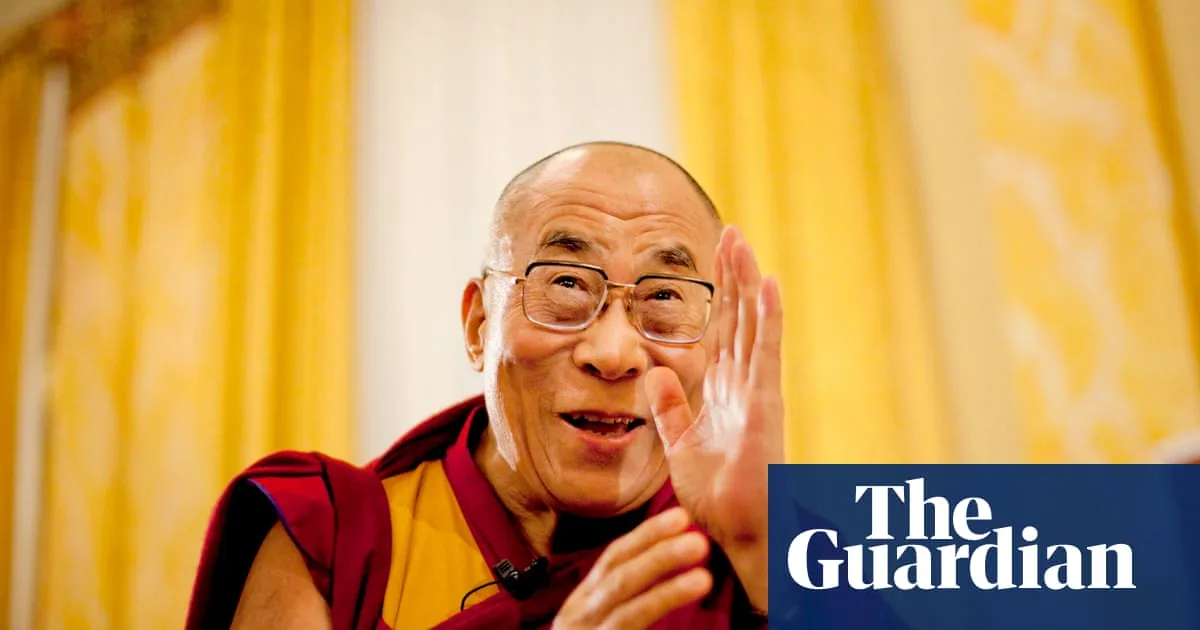
Few celebrations generate as much excitement in the hills of Dharamshala as the birthday of the Dalai Lama. This year, as monks and devotees flocked to the mountainous Indian city to celebrate the Tibetan spiritual leader's upcoming 90th birthday, the atmosphere was charged with anticipation. For years, the Dalai Lama has hinted at making a significant announcement regarding his reincarnation around this milestone birthday, and on Wednesday, he finally revealed what the future holds for the Tibetan community.
In a video broadcast directed at Tibetan monks and leaders, the Dalai Lama confirmed that he will continue his role until his passing. Following centuries of tradition, he stated that he would be reincarnated afterward, with the sole authority to locate his successor vested in his inner circle of closely allied monks. This process, often lengthy and intricate, aims to identify a child who embodies his spirit. “No one else has any such authority to interfere in this matter,” the Dalai Lama emphasized, putting to rest years of speculation surrounding his potential methods of reincarnation, including the controversial idea of transferring his spiritual essence to a living successor.
The announcement comes amid fears of a potential succession battle between the Tibetan community and the Chinese government, which has long sought to control the institution of the Dalai Lama, revered as the highest teacher in Tibetan Buddhism. The Dalai Lama's latest statement serves as a direct challenge to the Communist Party, which has maintained that only it possesses the authority to determine the next Dalai Lama, a claim enshrined in Chinese law.
Tansen Sen, a scholar of Indo-Chinese relations and Buddhism, noted that the Dalai Lama's message this time displayed a more diplomatic tone than previous statements. In past writings, he indicated that the next Dalai Lama would be born in the “free world,” suggesting outside China, but he refrained from repeating that assertion now. “I see this as a very strategically handled announcement which avoided ruffling China’s feathers too much,” Sen remarked, highlighting the geopolitical complexities surrounding the Dalai Lama's position.
The absence of the Dalai Lama's announcement from Chinese and Tibetan media underscores China's sensitivity on this issue. Robert Barnett, a scholar of Tibetan history at Soas University of London, observed, “China’s propaganda managers seem very reticent for this news to reach Tibetans or even Chinese.” This reticence suggests a fear among Chinese leaders of a popular resurgence of support for the Dalai Lama, revealing their struggle to formulate a response.
The complex history of Tibet's relationship with China dates back to 1950, when China invaded and took control of the region. Following a failed uprising in 1959, the Dalai Lama was forced into exile in India to escape arrest. After a perilous journey across the Himalayas, he met with then-Indian Prime Minister Jawaharlal Nehru, who controversially declared that the Tibetan spiritual leader “should be allowed to live in peace” in India. Since then, Dharamshala has become the political and religious headquarters for the Dalai Lama and the Tibetan community in exile.
For over 66 years, the Dalai Lama has served as a spiritual leader and a determined advocate for the Tibetan cause, resisting Chinese attempts to influence the Dalai Lama institution. In greater Tibet, home to approximately 6 million people, Chinese authorities have imposed stringent measures to suppress the Dalai Lama's influence, including banning his images. Despite this, the Dalai Lama remains more revered than ever, with a growing international profile and a Nobel Peace Prize to his name.
The future of the Dalai Lama's institution remains uncertain. Following his announcement, China's foreign ministry reiterated that the next Dalai Lama must be chosen “by drawing lots from a golden urn and approved by the central government.” Analysts predict that after the Dalai Lama's passing, two successors may emerge: one identified by Tibetan monks in accordance with tradition, likely outside China, and another selected by the Chinese Communist Party from within its borders.
The Dalai Lama's presence in Dharamshala has added a layer of tension to Indo-Chinese relations. Since border tensions flared in 2020, the Indian government, led by Prime Minister Narendra Modi, has begun to perceive the Tibetan issue as a form of leverage over China. Recently, India’s Minister of Minority Affairs, Kiren Rijiju, stated that the reincarnation of the Dalai Lama “is to be decided by the established convention and as per the wish of the Dalai Lama himself. Nobody else has the right to decide it except him.”
The geopolitical challenges surrounding the Dalai Lama's reincarnation are likely to complicate further, especially if Tibetan officials identify his reincarnation within India. Despite the challenges, Tibetan officials have confirmed that back channels with China remain open, with the Dalai Lama actively working to prevent the 600-year-old Tibetan Buddhist institution from being controlled by Chinese political interests.
As he led prayers on the eve of his birthday, the Dalai Lama, appearing in good health, expressed hope to live another 30 or 40 years. He remains a pivotal figure in the Tibetan struggle, embodying both spiritual wisdom and astute political insight.